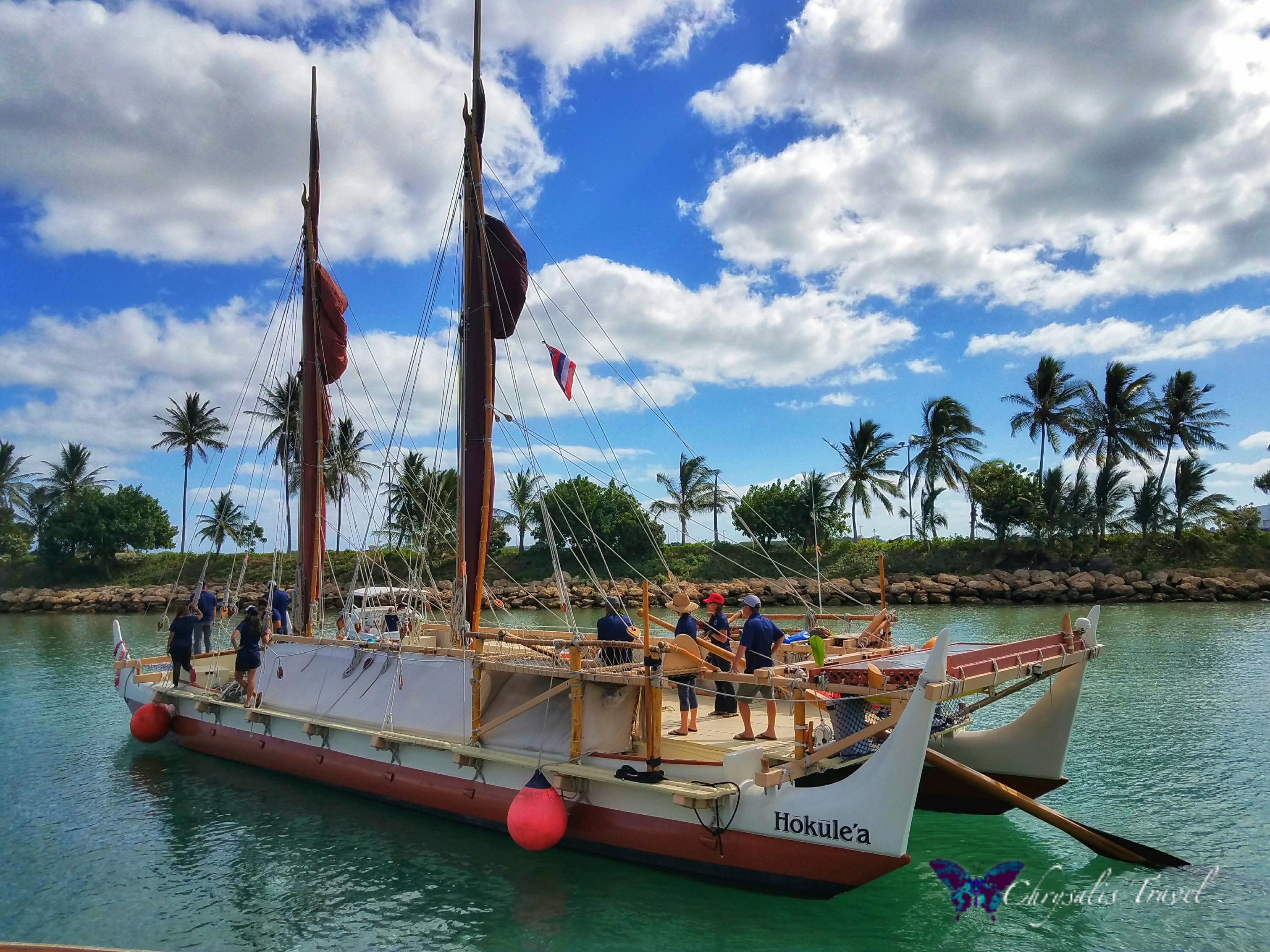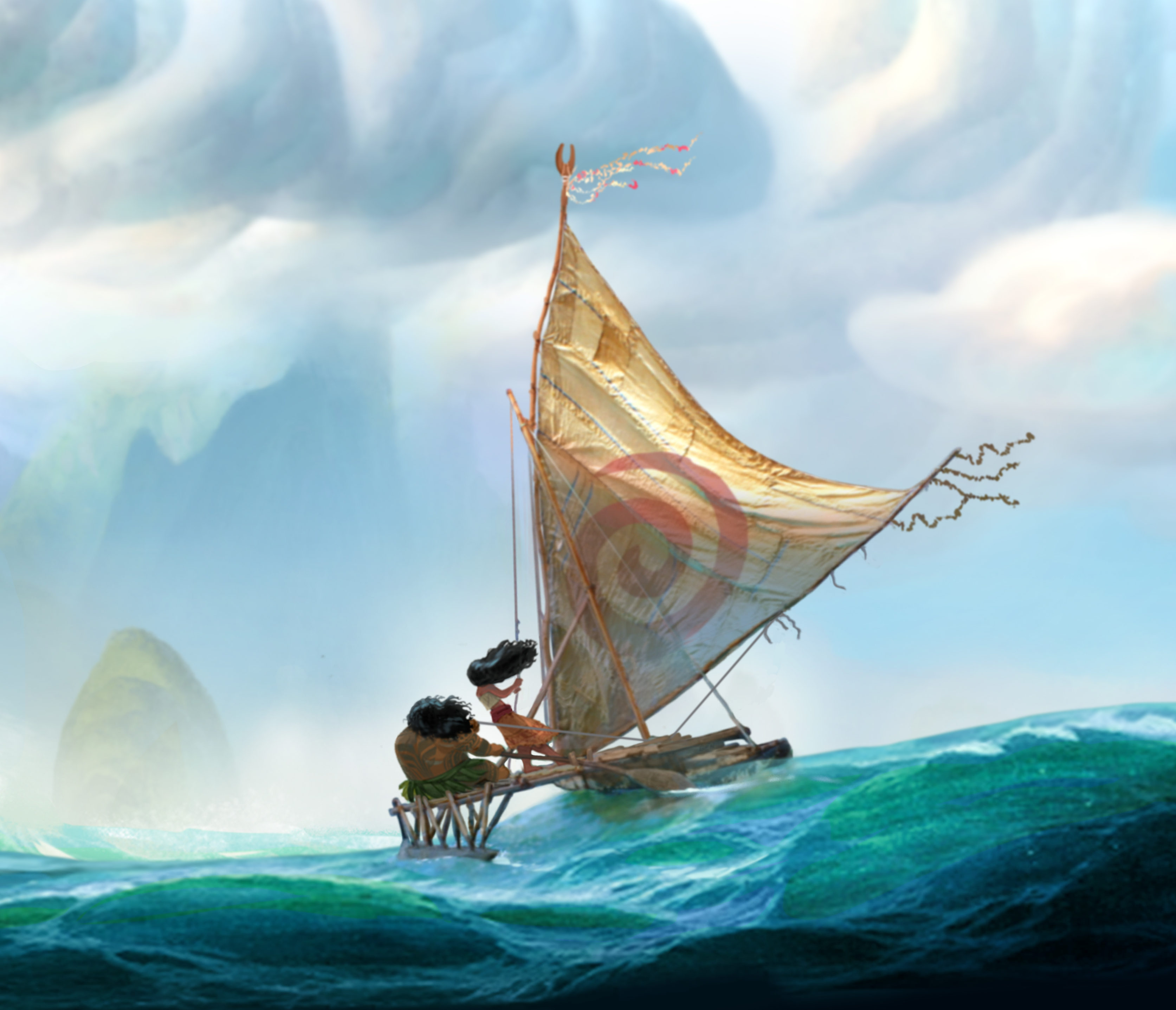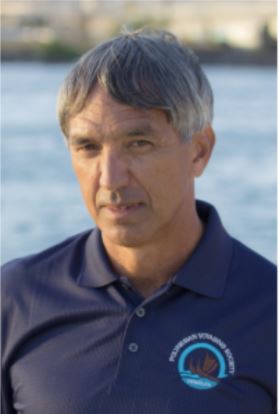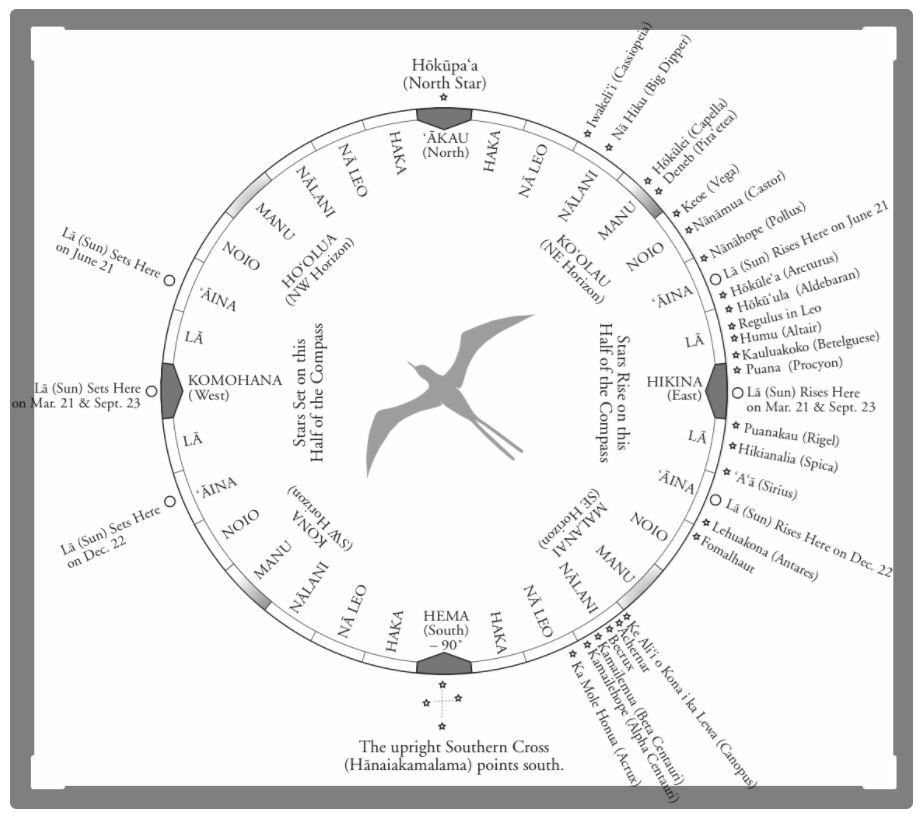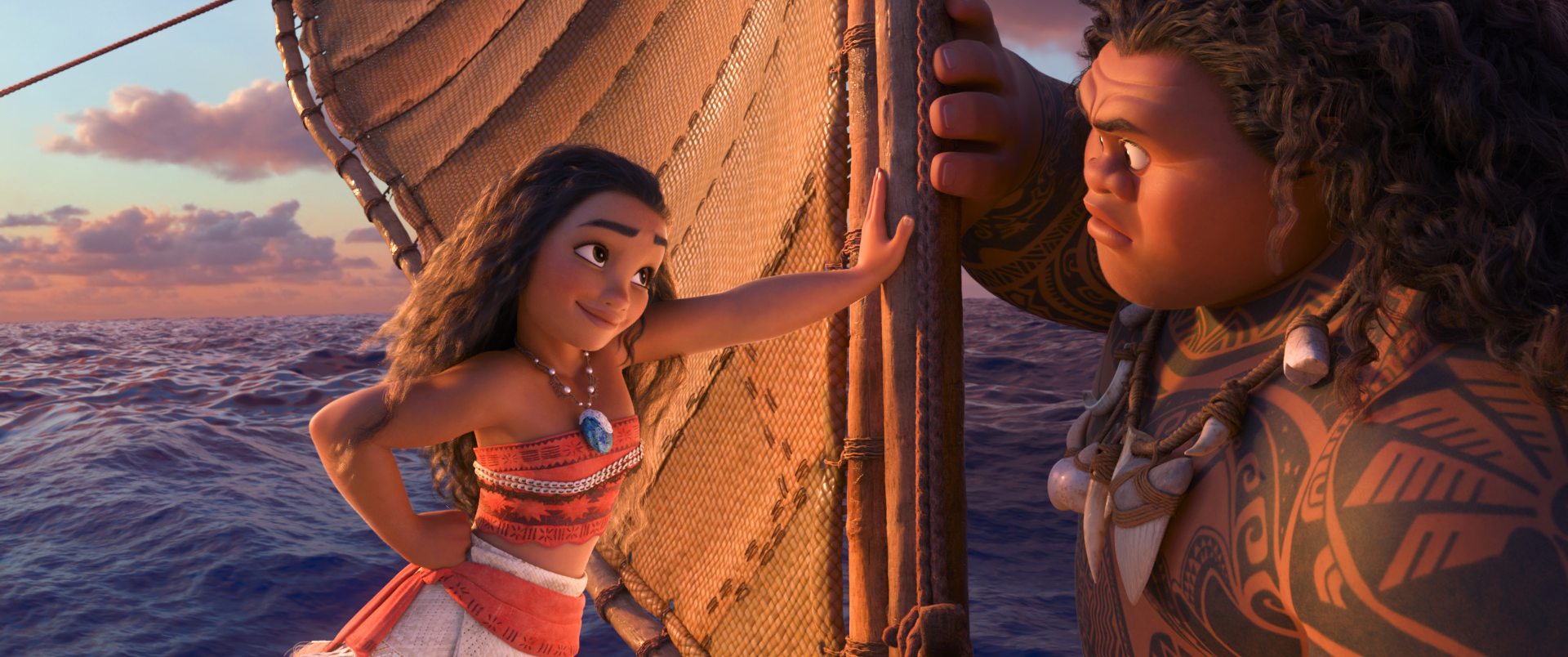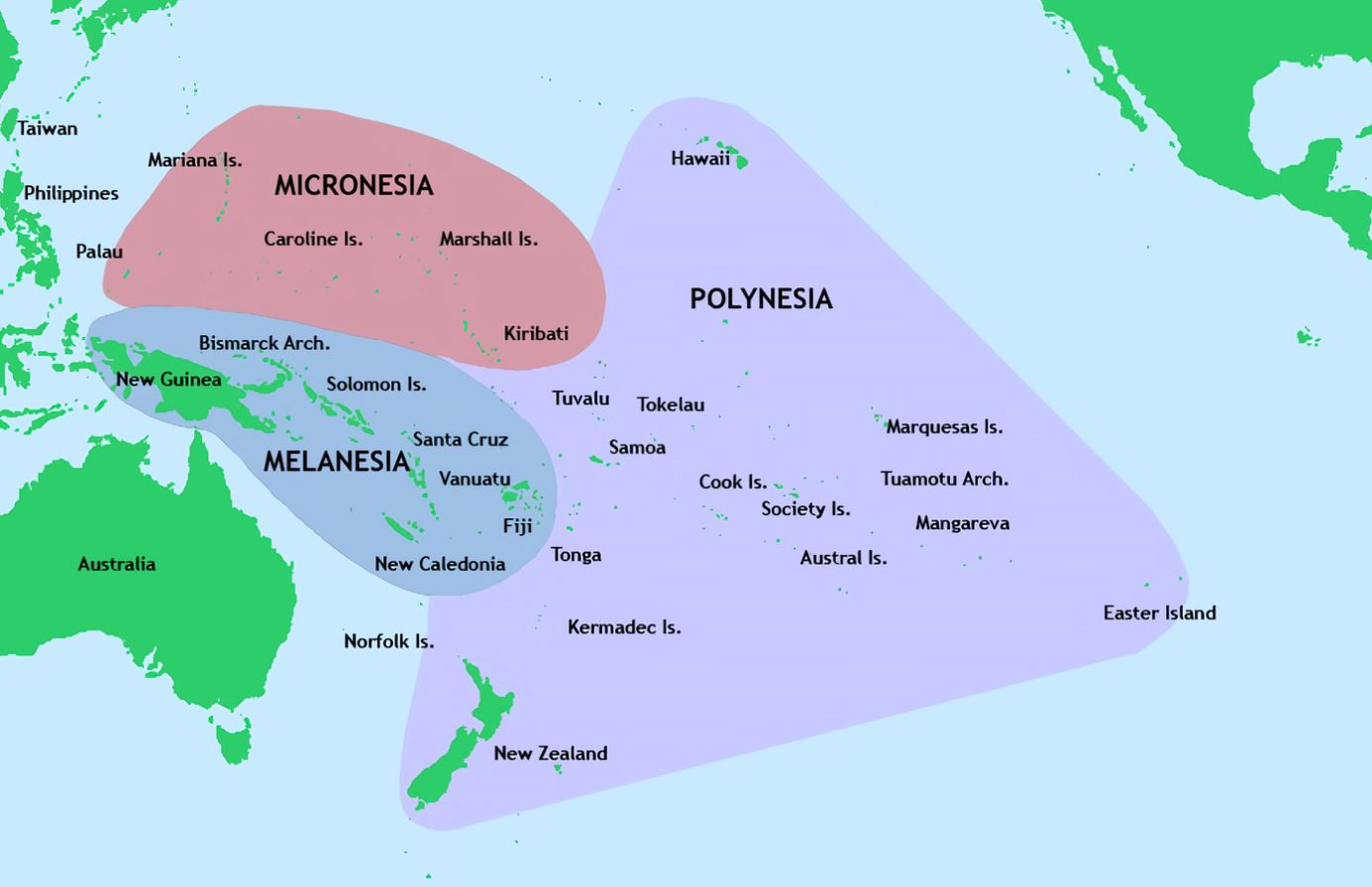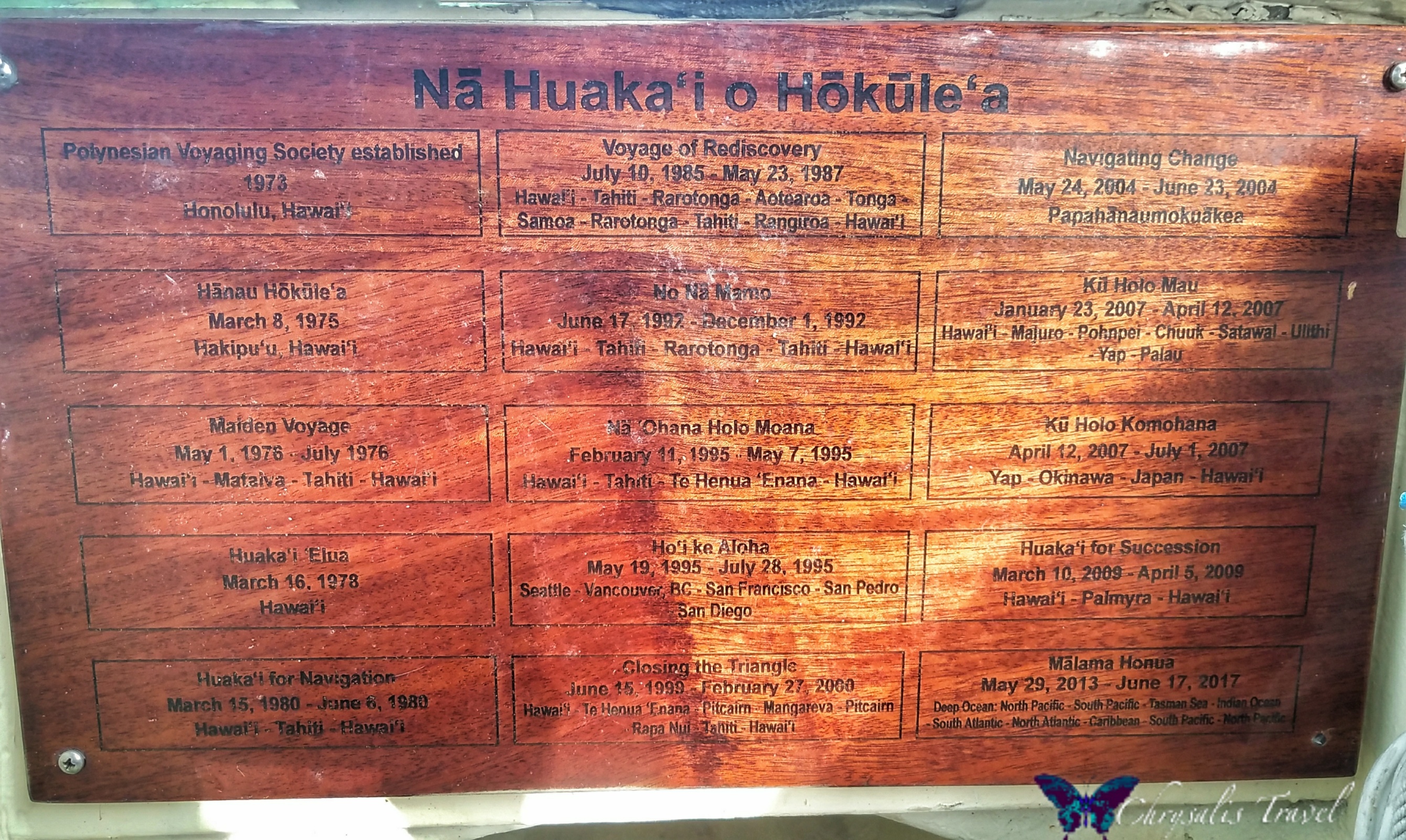How Far We’ll Go: Wayfinding Like Moana on Hawaii’s Hōkūle’a
Feel the cool sea breeze brush across your face. Smell the salty mist as waves lap against your canoe. Squint into the mesmerizing glare as a thousand blazing suns reflect off the water. See the possibilities beyond the horizon, where the sky meets the sea. Be as one with the ocean, and the myriad of species she nurtures within her. This was the inner calling of a Wayfinder named Moana.
This was also the calling of ancient Polynesian voyagers who populated the islands of the Pacific Ocean. Europeans who ‘discovered’ the Pacific islands (on their large ships) found it miraculous that the Polynesian islanders had sailed thousands of miles across open ocean in canoes. They navigated without GPS. Or a sextant. Or a compass.
How did they do it?
The Sea is Integral to Life
The Disney animation team learned about the cultures of Oceania, and their intimate ties with the sea. The sea sustained life, connected life, but also took life. Ancient Polynesians understood stewardship, as they learned to ‘live with the land’ and respect the sea.These Stone-age peoples used cues from nature to accomplish what European sailors only started to do thousands of years later. Polynesians found and settled on new islands in the Pacific – tiny specks sprinkled into thousands of miles of ocean. But how?
In their research for Moana, Ron Clements, John Musker and Osnat Shurer gathered an “Oceanic Story Trust.” This Trust was a collection of cultural elders and expert advisors. One of these experts was Nainoa Thompson, Pwo (master) Navigator of Hōkūleʻa: Hawaii’s real-life voyaging canoe. Nainoa, President of the Polynesian Voyaging Society (PVS), writes about Wayfinding.
Voyaging by the Stars
Saying that the ancient Polynesians followed the stars is an over-simplification of Wayfinding. Celestial navigation was just one of the tools they used. Indeed, navigators needed a detailed understanding of the constellations. The brightest stars. Where they rose, where they set. How many degrees off they were from your land vantage point. Here is Nainoa’s Star Compass (courtesy of the PVS website), with Hawaii’s brightest stars noted.In Hawaii, important navigational stars include Polaris – the “North Star,” and the Southern Cross. Moana is seen navigating by Orion (Betelgeuse on the star compass), and also towards Maui’s fishhook (the tail of Scorpio – Antares).
Fascinated? The Polynesian Voyaging Society – which has a founding mission for education – explains star navigation in more detail on their website. Who knew science could be fun?
Polynesian Wayfinding: Using Nature’s Cues
So what happened on cloudy or stormy nights? Or during the day when there were no stars? Were these voyagers lost? A master Wayfinder navigates by “observation and adjusting to the natural environment.” Understanding nature’s other cues were just as important.Polynesian Wayfinding techniques involve watching the position of the sun, especially at sunrise and sunset. The crew is on alert during these important navigational times, waking before sunrise to note the canoe’s positioning.
Navigators memorize the direction that the waves are hitting the canoe. If the canoe drifts off course, the waves will hit the canoe from a different direction. A master navigator can sense a change in direction even while lying down, feeling wave patterns in the hull of the canoe. This skill is particularly useful in the darkness when you cannot see the waves. Wave patterns also change when there is an island nearby.
Of course, wind plays a large role in sailing a voyaging canoe. “If the wind in my sail on the sea stays behind me. One day I'll know, how far I'll go…” Ideally, land targets are downwind as much as possible, since tacking into the wind is tedious and difficult.
Observing animal behaviors also becomes important. Nainoa learned from his teacher, Mau Piailug, to watch dolphins and seabirds. Seabirds that return to land at night to rest – such as the noio (brown tern) and manu o ku (white tern) – indicate proximity to land. If these seabirds are sighted, there should be land within a 40- to 120-mile radius.
Lookouts are placed at sunrise and sunset to observe the flight patterns of these birds, as they fly from land, and back towards home at the end of the day. There are many other fascinating details about navigation on the Hōkūleʻa website (make sure you click on Read More to expand the text).
Reawakening of Hawaiian Wayfinding Culture
Mankind has always possessed a fascination with ancestry. Where did we come from? Moana had this indescribable call from the sea that she did not understand… until her grandmother showed her the cave of voyaging canoes. “We were voyagers!”But the art of Wayfinding had been lost over generations. Moana needed a teacher. Cue demi-god, Maui and his fishhook.
In real life, Wayfinding navigation had become extinct in Polynesia. The skills and knowledge had been lost. Then came Hawaiian artist Herb Kawainui Kāne, who dreamed of building a voyaging canoe, and reviving his seafaring heritage. Herb Kāne was one of the founding members of the Polynesian Voyaging Society in 1973.
[gallery td_select_gallery_slide="slide" ids="223387,223388"]
With years of research, they built Hōkūleʻa (“Star of Gladness”), a traditional double-hulled voyaging canoe. I have long admired Herb Kāne’s art, but did not know he was also responsible for Hōkūleʻa.
They sought a Wayfinder, but there were none left in all of Polynesia. “We were facing cultural extinction,” said Nainoa. Then, they found Mau Piailug from a tiny island in Micronesia.
The Polynesian Triangle
I’m fascinated by Polynesian culture and a great resource is actually the Polynesian Cultural Center on Oahu (it’s much more than just a luau). There, they explained to me the “Polynesian triangle.” This triangle extends from New Zealand (“Aotearoa”) in the southwest, to Easter Island (“Rapa Nui”) in the Southeast, to Hawaii in the North. 10 million square miles of ocean – including Samoa, Tonga Tokelau, and the Marquesas – all united with a similar culture.This map from Wikipedia illustrates the general groupings of Polynesia, Micronesia (Marshall Islands), and Melanesia (Fiji, Solomon Islands).
Mau Piailug – a master Pwo navigator from the age of 18 – was from the island of Satawal in Micronesia. He reached out to across cultures and agreed to teach the Polynesian Voyaging Society founders the art of Wayfinding.
Triumph in Tahiti
Hōkūleʻa sailed on her Maiden Voyage on May 1st, 1976. Guided by Mau on the longest and farthest journey he had ever attempted, she reached Tahiti (“Society Islands” on the map) thirty days later. Her crew had successfully navigated 2500 miles using only traditional wayfinding methods – something that hadn’t been done in over 600 years.Hōkūleʻa sparked hope as she pulled into Papeete Harbor and was welcomed by 17,000 people. The Polynesian wayfinding heritage was not lost. It is still possible to navigate by canoe using traditional methods.
How Far They’ll Go – Setting New Records
Mau helped Nainoa and his crew sail Hōkūleʻa roundtrip to Tahiti 1980. From 1985 - 1987, she navigated across Polynesia: to New Zealand, Samoa, and Tonga. In 1999-2000, she visited Rapa Nui (Easter Island), completing the Polynesian Triangle. With growing experience, Hōkūleʻa sailed to Japan, Micronesia, and the West Coast of the United States.In 2014, Hōkūleʻa set out on her most ambitious voyage yet: a trip around the world.
Mālama Honua – a Voyage of Goodwill and Stewardship
The Mālama Honua (‘Caring for Island Earth’) voyage lasted three years, 2014-2017. During that voyage, Hōkūleʻa sailed 40,300 nautical miles, visiting 23 countries and more than 150 ports of call. It was a team undertaking involving 245 crew members. Overarching was a message of living sustainably on the earth and sharing the Polynesian culture.
Hōkūleʻa sailed around the world, sharing kindness and compassion. Moana found that kindness and compassion were the solution to restoring the heart of Te Fiti, and the health of her land. Perhaps this message is just what our “island earth” needs. All because of a canoe.
Interested in more? Join us as we ‘Talk story’ with Women of Hōkūleʻa, as real-life Moanas share their adventures. And step aboard Hōkūleʻa for a quick glimpse of how this voyaging canoe may have inspired Moana.

